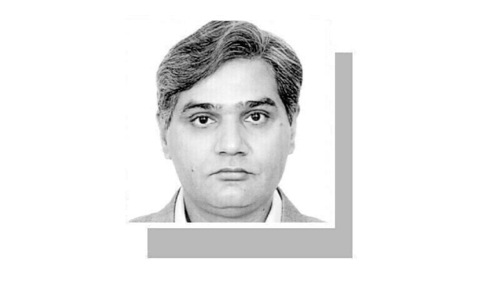It was 1830 and Punjab’s ruler Maharaja Ranjit Singh was expanding the border of his empire to Afghanistan and Kashmir. During this time, a spacious gurdwara on six kanals of land was constructed in Rawalpindi.
This later became important for two reasons – the establishment of the Nirankari sect of Sikhism and for the first marriage in line with Sikh rituals held at this place.
Nirankari Gurdwara in the heart of Raja Bazaar’s bustling Namak Mandi used to be the biggest worship place in northern India and now it is a government high school for about 200 boys. Still, many Sikh pilgrims visit this building, probably because it is the birthplace of the reformist Nirankari sect of Sikhs, which came into being in 1851 by Baba Dayal Singh.
Baba Dayal Singh was born in Peshawar in 1783 and moved to live with his maternal uncle Mulakkha Singh in Rawalpindi after the death of his mother Bibi Ladki in 1802. He used to recite the word ‘Nirankai’ and opposed idol worship, and his subsequent followers came to be known as ‘Nirankari’. Baba Dayal Singh died in 1855.

Once spread over six kanals, the building now stands on almost 1.5 kanal due to encroachments. The gurdwara had three doors: two opened in Nirankari Bazaar and one in the Namak Mandi. But now they have been reduced to two: one each in Namak Mandi and Nirankari Bazaar.
Similarly, its langar khana (kitchen) has also fallen victim to encroachments, with many people holding the Evacuee Trust Property Board for the poor state of this gurdwara.
It used to have three storeys but the third floor of the building was destroyed due to earthquakes. The marble used for pillars and the floor in the building reflects Mughal artwork. The hall had a main platform that was used for the Granth Sahib, the holy book of Sikhs.
On the left side of the main darbar hall, there was a samadhi of Baba Dayal Singh, adjacent to a small room (Manji Sahib) made of white marble where Granth Sahib was kept in the night.
There was a big pole adjacent to Samadhi and Manji Sahib where the Sikh flag called ‘Nishan Sahib’ fluttered, but the upper portion was destroyed during the Partition violence.
Government Shimla Boys High School in-charge Mohammad Suhail said there were many rooms to house visitors. He said in 1957, the government converted it into a school on court orders. He said the government constructed more rooms for the school in the courtyard as it was not allowed to alter the structure of the heritage site.

He quoted the Sikh visitors saying that the marriage ceremony of Bhai Bhola Singh and Bibi Nihal Kaur was solemnised in 1855 in this gurdwara following Sikh rituals. Before this, Sikh marriages followed Hindu rituals.
Assistant Commissioner City Hakim Khan told Dawn that the district administration was working to restore the heritage sites. He said that the administration was facilitating the Sikh visitors to access their worship places without any hurdles. He said that the record of the land would be consulted with the Evacuee Trust Property Board and action would be taken if the cases were not pending in the local courts.
Published in Dawn, December 30th, 2024















































